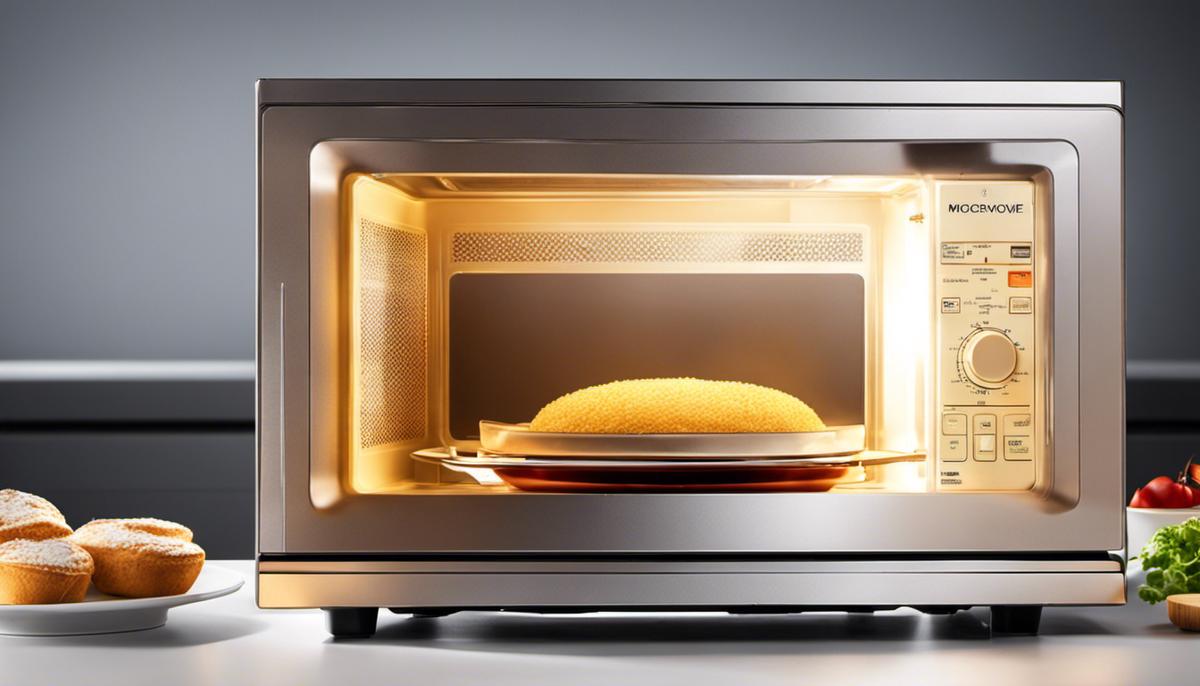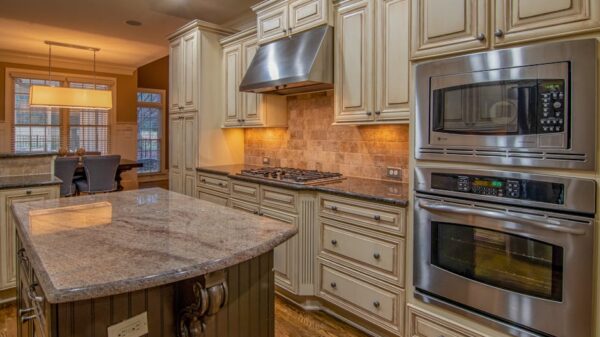When it comes to convenience in modern kitchens, few appliances can compete with the versatility and efficiency of microwave ovens. An invention that revolutionized the culinary world, the microwave oven is now an indispensable tool that significantly reduces cooking time while maintaining food quality. Understanding its underlying technology, the journey of its evolution, and the advanced features it now offers is not only intriguing but also useful in maximizing its benefits. From unraveling the science of electromagnetic waves in food preparation to analyzing the top-brands in the market, each theme that we delve into offers a comprehensive look into the world of advanced microwave ovens.
Understanding Microwave Technology
Understanding Advanced Microwaves: How Do They Work?
A microwave oven generates electromagnetic waves, specifically microwaves, that provoke the movement of water molecules in the food. These molecules, when agitated by the electromagnetic waves, generate heat due to friction, and this heat cooks the food. This process is known as dielectric heating. Unlike conventional cooking methods which heat food from the outside, microwave ovens heat food evenly from the inside out.
Advanced microwaves harness this same core technology, but combine it with added features like pre-programmed cooking settings, convection heating, and sensor cooking capabilities, which adjust the cooking time and power levels based on the steam the food emits.
The Science Behind It: Electromagnetic Waves and Food Cooking
Microwaves belong to the radio part of the electromagnetic spectrum. They have a wavelength longer than infrared radiation, but shorter than radio waves. In a microwave oven, these waves are generated by a device known as a magnetron. When you start the microwave, the magnetron takes electricity from the power outlet and converts it into high-powered, 12-centimeter radio waves.
The microwaves bounce back and forth off the reflective metal walls of the oven’s interior. Upon penetrating the food, they cause the water molecules within the food to vibrate. This rapid vibration generates heat, which, in turn, cooks the food or heats up the beverage.
Safety Measures in Microwave Design
Several safety measures are incorporated into the design of microwave ovens to protect users. The microwaves are confined within a metal box, which keeps them from escaping into the environment. The door of a microwave oven is specifically designed with a metal mesh. The holes in this mesh are smaller than the microwaves, which means the microwaves cannot pass through, keeping users protected when the microwave is in use.
Additionally, microwave ovens operate via a safety interlock system. This means the oven will automatically switch off the moment the door is opened. This prevents any accidental exposure to microwaves.
Efficiency in Terms of Energy Use
Microwave ovens are known for their energy efficiency. They use energy only to generate microwaves, unlike conventional ovens which need to heat the entire oven space to cook food. Microwaves directly heat only the food, making them significantly more energy-efficient.
Moreover, microwaves also help save energy by reducing cooking times. Foods cook faster in a microwave because the energy is focused directly towards the food molecules. In advanced microwaves, with features like sensor cooking, the oven can automatically adjust cooking times based on the amount of energy required, enhancing their efficiency.
Conclusion
Today, microwave ovens are an essential kitchen appliance due to their practicality and efficiency. The targeted cooking methodology and established safety measures have confirmed their suitability for frequent use in kitchen settings.
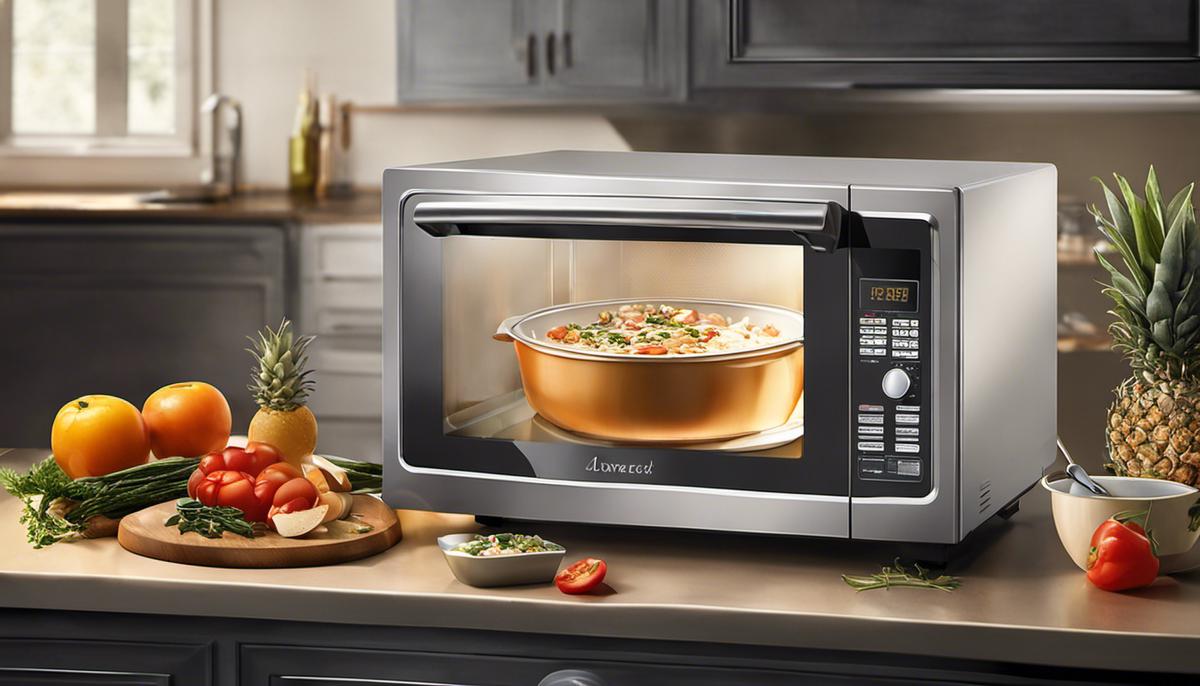
Evolution of Microwave Ovens
The Advent and Early Stage Models
The birth of microwave ovens can be traced back to World War II, during the inception of radar technology which utilized microwaves. The microwave oven was unintentionally discovered by Percy Spencer, an engineer at Raytheon Corporation. Amid his tasks involving a microwave radiation magnetron, he realized a candy bar in his pocket had melted unexpectedly. This revelation led to the fabrication of the inaugural microwave oven, the ‘Radarange’ in 1946. These premier models, while revolutionary, were bulky, heavy, and had a substantial price tag.
Advances Over the Decades
In the 1970s, advancements in technology and production methods resulted in drastic reductions in the size and cost of microwave ovens, making them affordable for domestic use. The 1980s saw the introduction of turntables in microwave ovens, offering more even cooking. In the subsequent years, manufacturers introduced pre-set cooking sequences, which added the convenience of not having to set cooking times and temperatures.
Integrating Convection: A Revolutionary Step
By the 1990s, a revolutionary introduction was made in the form of the convection microwave oven. These models included a heating element and a fan to circulate hot air around the food, which helped it to cook more evenly and quickly. In addition, it enabled the microwave to perform baking and roasting functions, which were previously exclusive to conventional ovens.
The Age of Smart Microwaves
The advent of the 21st century saw the rise in smart technology, and microwave ovens did not stay untouched. By integrating Wi-Fi and smart home connectivity, microwaves took a step towards advancement. The smart microwave ovens can be operated remotely via smartphone apps, perform voice-activated commands via smart home systems, and even offer personalized cooking recommendations.
Contemporary Advancements: More Than Just Microwaves
Advanced microwave ovens now come with features such as humidity sensors that can automatically adjust cooking time and power levels. Other unique features in high-end models include auto-reheat, defrost by weight, pre-set cooking modes for specific foods, and multistage cooking, where power levels and cooking times can be programmed to change automatically during cooking.
Design advances now allow microwave ovens to be integrated seamlessly into kitchen designs. Over-the-range microwaves double as range hoods, providing light and fans to ventilate cooking smoke. Built-in models are designed to fit flush with cabinets and countertops, resulting in a sleek, modern aesthetic. Some microwave models even offer drop-down doors, similar to traditional ovens.
Exploring the Future of Microwave Ovens
As we gaze into the future of microwave ovens, we see a landscape brimming with potential technological advancements. This includes additions such as built-in air fryers, bar code readers that can perfect the cooking process of packaged foods, and even screens that let you check on your meals without needing to crack open the door. Advanced sensor technology will also play a big part, finetuning the cooking times and temperatures based on the type and amount of food in the oven.
In this era of rapid technological advancement, it’s no surprise to predict that smart features will soon become a norm in microwave ovens. This fantastic leap forward not only strengthens the convenience of these devices but also broadens their versatility, going beyond mere reheating and defrosting tools to become sophisticated cooking appliances.
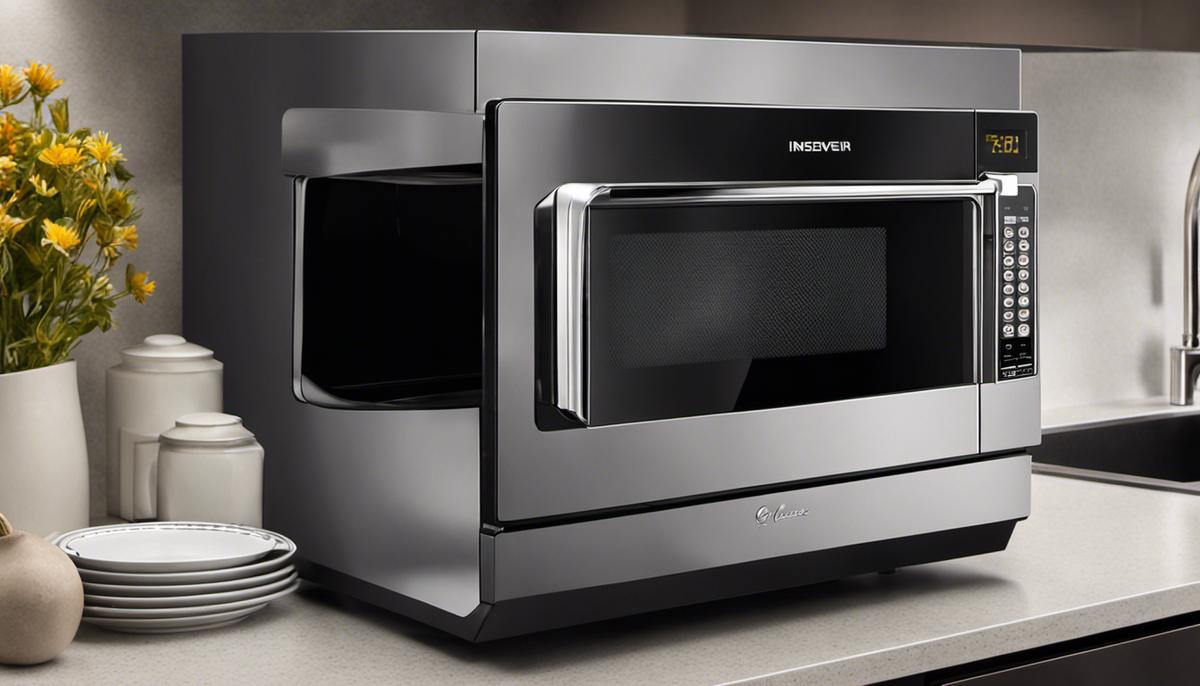
Features of Advanced Microwave Ovens
Versatile Features of Advanced Microwave Ovens
Advanced microwave ovens enrich your cooking adventures with a host of innovative features, one of which is preset cooking modes. These modes are designed to take the guesswork out of cooking. Now, cooking popcorn, reheating pizza, or roasting chicken is as easy as pressing a button for the desired mode, and voila! The appliance adjusts to the perfect time and temperature settings.
Among the many exciting upgrades, sensor cooking holds a noteworthy position. Utilizing humidity sensors, this feature can gauge when the food is cooked to perfection and will then switch off from heating, thus preventing any chance of overcooking. This ingenious feature not only maintains the moisture levels in the food but also ensures the flavors and nutrients are well-preserved, leading to delicious, nourishing meals every single time.
And the cherry on the cake? These enhanced microwave ovens harmonize beautifully with the concept of a smart home. Some models can sync with devices like Amazon Alexa or Google Home, allowing for the convenience of voice-controlled operation. Moreover, these smart microwaves can even be controlled via a smartphone app. This way, even if you’re away from home, you can still manage your microwave, as long as you’re connected to the internet.
The Revolution of Power Levels
Notably, the concept of power level has morphed considerably in advanced microwave ovens. Microwaves now offer multiple power levels, providing users with more control over their cooking. A lower power level can be used to defrost frozen foods while a higher power level is appropriate for searing and browning. Some models even feature an invert technology that offers continuous, consistent heat instead of the periodic on-and-off approach used by conventional microwaves.
Exploring More Enhancements
Even though pre-set cooking modes, sensors, smart home compatibility, and innovative power levels are some of the leading enhancements in advanced microwave ovens, other additions worth considering include touch panel controls, child safety locks, and multiple cooking racks. These microwaves also offer easy-cleanup features like non-stick interiors and self-cleaning options.
The touch panel controls of these modern microwaves offer smooth operation with the touch of a button. Child safety locks are an excellent addition for households with young children, ensuring the microwave doors can’t be opened unintentionally. Multiple cooking racks come in handy when preparing multiple dishes simultaneously, as it allows the whole meal to be cooked together in a time-efficient manner.
Exploring Advanced Microwave Ovens
Over the years, microwave ovens have seen significant advancements that have not only perfected their functionality but also upgraded the user experience. These enhancements align with the requirements of the modern kitchen dynamics, efficiently transforming the cooking process into a smooth and delightful activity.

Brand Comparison and Reviews
Digging into the Panasonic NN-SN686S Microwave
When it comes to microwave appliances, Panasonic stands out. The Panasonic NN-SN686S is an epitome of advanced microwave technology which uses its unique Inverter Technology to evenly distribute heat and sustain the taste and texture of the food. Accompanied by Turbo Defrost, the oven ensures quicker defrosting of food. Its sleek design, marked by a fingerprint-resistant stainless steel finish and a spacious interior of 1.2 cubic feet, adds a modern touch to any kitchen. Despite certain durability concerns shared by users, it continues to be a top pick. Prices for this model range from $180 to $200.
LG
The LG LMC2075ST NeoChef Countertop Microwave Oven is another high-end product. It enhances user convenience by showcasing its intuitive SmoothTouch glass controls. The SensoCook technology adjusts power levels for different foods to prevent over or undercooking. This LG microwave has a substantial capacity of 2.0 cubic feet, providing adequate space for large dishes. However, it is a bit on the pricier end, ranging from $240 to $300. A few customers reported noise issues during operation.
Samsung
Samsung is best-known for its diverse product catalog including advanced microwaves. The Samsung MS14K6000AS/AA is an exceptional model with Sensor Cooking technology that automatically adjusts cooking time for optimal results. The durable ceramic interior is scratch-resistant and easy to clean. However, the Samsung microwave oven has a lower capacity than its competitors, measuring only 1.4 cubic feet. Prices for this model are around $210 to $230, putting it in a slightly lower cost bracket. A small percentage of customers reported issues with the control panel failing over time.
GE Appliances
When discussing advanced microwave ovens, GE Appliances cannot be overlooked. Their GE Profile PEM31SFSS Countertop Microwave offers an impressive variety of features. The oven offers Sensor Cooking Controls that automatically adjust time and power for superior cooking results. Several customers have praised its compact size, making it suitable for smaller spaces. The cost ranges from $350 to $400, ranking it as a more premium choice. An occasional complaint was about its smaller size that could not accommodate larger dishes.
Breville
Breville’s Quick Touch Intuitive Microwave BMO734XL is known for its intelligent technology. It uses sensors to monitor the time to cook and automatically adjust power intensity. The Dynamic Power Adjustment enables the user to change power while the microwave is in use. Yet, Breville microwaves are pricier than others, ranging from $400 to $500. Some user-reviews reflect concerns regarding customer service and durability.
Choosing Advanced Microwave Ovens
When it comes down to selecting an advanced microwave oven, your specific needs should drive your decision. With each brand offering its own unique blend of high-tech features, stylish design, interior capacity, and pricing, making an informed decision can be a bit overwhelming. Tips to make the process easier include researching recent customer reviews comparing these attributes. This will surely guide you to the microwave oven best suited for your needs.

Maintenance and Safety Guidelines
Caring and Upkeeping for Advanced Microwave Ovens
Maintaining the longevity of your advanced microwave oven involves regular and effective cleaning. Ignoring food debris, scrapes and oil splatters can not only lead to pests and undesirable smells, but also shortens the lifespan of your appliance. A practical, easy cleanup technique is to heat a mixture of one cup of water and a tablespoon of vinegar in a microwave-safe container for about five minutes, or till steam is visible. This steam loosens any hardened food spots, making them easier to remove.
For those advanced microwaves with stainless steel interiors, it is crucial to avoid abrasive cleaning tools such as steel wool pads or potent chemicals that could scratch or damage the surface. A safer alternative includes wiping the interior with a soft cloth soaked in warm soapy water, ensuring it is dried thoroughly after cleaning to discourage moisture-based damages.
Advanced microwave ovens often have self-cleaning features, including steam clean or deodorizing settings. Taking advantage of these advanced features can reduce the energy put into regular upkeep. It’s advisable to refer to your oven’s user manual for guidelines on how to efficiently utilize these time-saving features.
Extending Your Microwave Oven’s Lifespan
Keeping the door seals clean is crucial in maintaining the efficiency of a microwave oven. Dirty or damaged seals can lead to heat or microwave energy leakage, causing the appliance to work harder and reducing its lifespan.
Servicing your microwave oven annually by a certified technician can help in early detection and resolution of any potential issues that could shorten its life. Some manufacturers even provide a warranty extension for regular servicing.
Safety Measures for Advanced Microwave Oven use
Safety is paramount when using any electrical appliances, including advanced microwave ovens. Always use microwave-safe containers and stay clear of any metal or foil. If a fire starts, keep the door closed and unplug the unit.
Another safety tip is to ensure there’s adequate ventilation around the microwave oven, especially if it’s installed into a cabinet or wall. This helps to avoid overheating, which can lead to internal damage or fires. The U.S. Food and Drug Administration recommends at least 2 inches of space around the oven.
Children should only use the microwave under adult supervision. Many advanced microwave ovens have child safety locks – be sure to use this feature if there are young children in the house.
Lastly, if the oven is damaged, especially the door or hinges, it is recommended to stop using it immediately and contact a certified technician. Defective doors may result in energy leakage, which can be harmful. According to the World Health Organization, radiation injuries are unlikely with modern microwave ovens, but it is still better to err on the side of caution.
References and Expert Advice
For accurate information and troubleshooting tips, always refer to the user manual provided by the manufacturer. Manufacturer websites also often have online support and FAQ sections to help resolve common issues.
You can also consult consumer reports or trusted review platforms for first-hand user reviews, advice, or additional cleaning and maintenance tips for specific models of advanced microwave ovens.
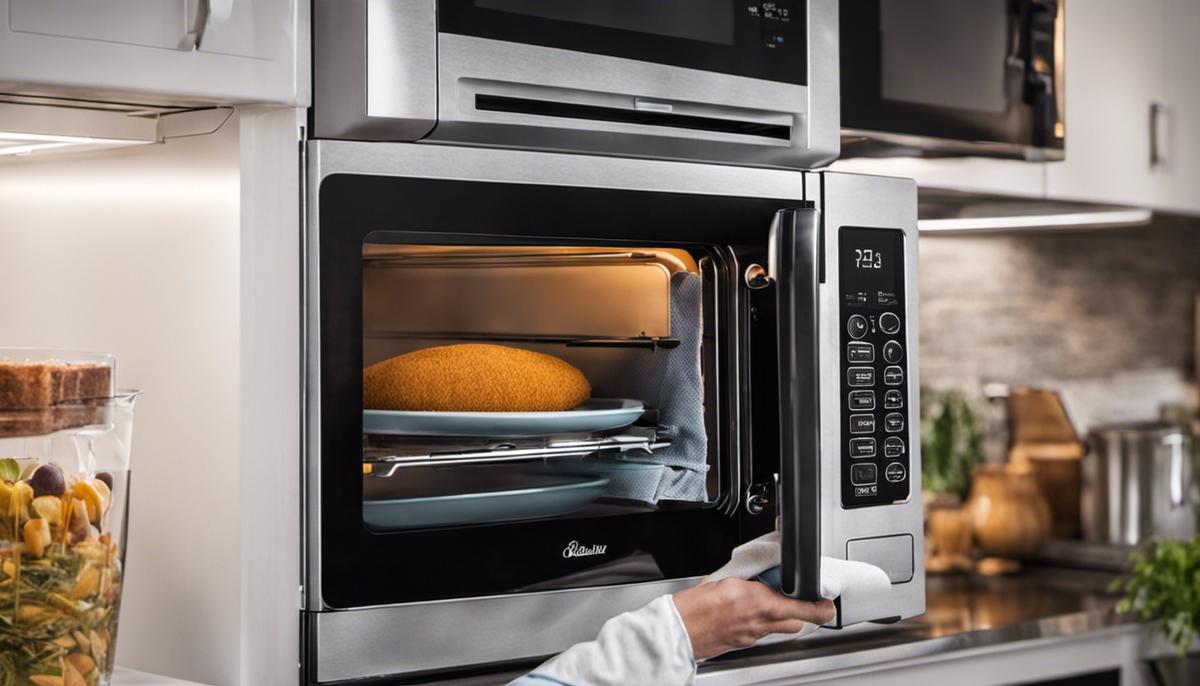
Through a detailed exploration of advanced microwave ovens, we’re able to appreciate the incredible convenience and efficiency these appliances bring to our everyday lives. Acknowledging their historical evolution, understanding the technology that powers them, appreciating their advanced features, and ensuring safe usage, we can truly maximize the benefits they offer. With the right insight into various brands and a clear understanding of maintenance guidelines, having a microwave oven that perfectly suits personal needs and preferences becomes a reachable prospect. This deeper appreciation of microwave ovens serves as a reminder of how technology continually shapes and enhances our lives.


